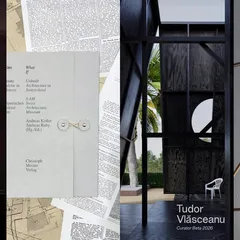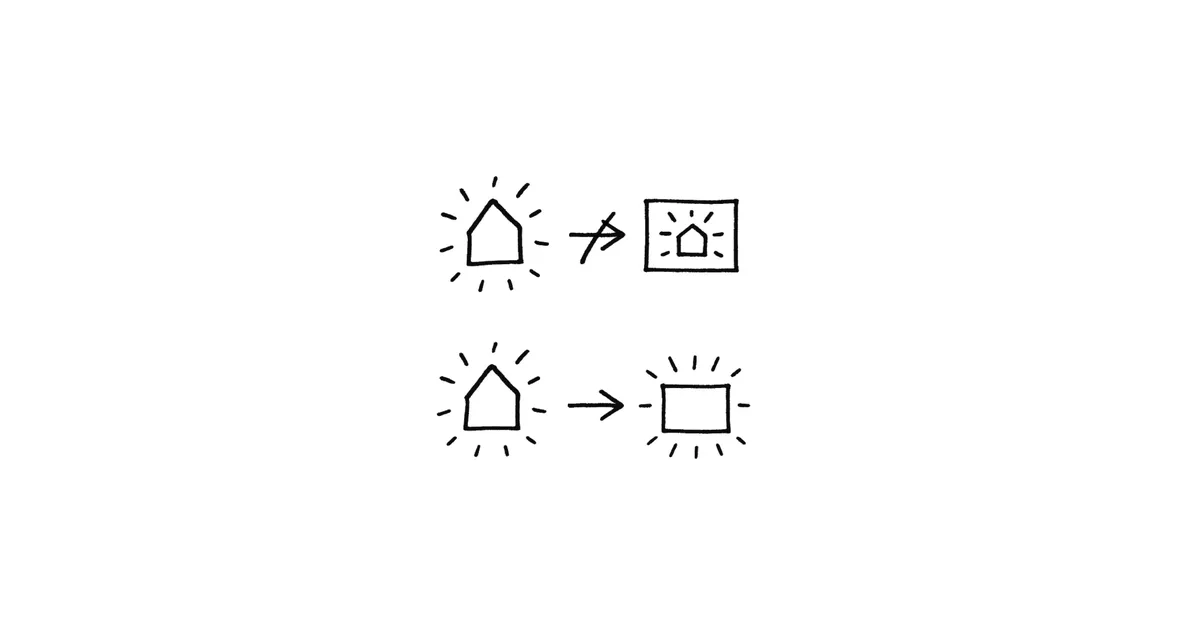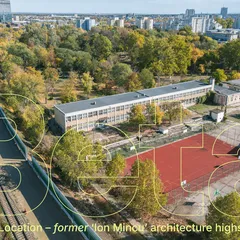In Practice – as opposed to ‘in theory’
Curatorial note
In Theory
The potential of international architecture biennials, triennials and large-scale exhibitions lies in connecting people and sharing knowledge through collective exploration. Yet they are increasingly subject to strong economic and ecological criticism, as well as concerns over how the format itself has evolved. What sets out to be a cultural exchange also tends to become insular in character, its capacity to reach and engage a wider audience varying considerably. This may as well lie in the act of exhibiting architecture itself.
Architecture exhibitions are mostly built around projects that are elsewhere, gone, or have never been realised. To exhibit them, their doubles are imported: drawings, models, fragments, and the people who deliver their narratives. What flows into this act of representing something where it is not is, in fact, a logistics chain: matter and knowledge are displaced, packed, shipped, and reassembled, often at substantial ecological, economic, and human cost, and sometimes with little sensitivity, connection, or real effect in the context where they are received.
This introduces a distance between what architecture is and what can be experienced in exhibition spaces. Unlike art, architecture can only appear in exhibitions through proxies and fragments – or, in theory – which inherently carries the risk of disconnecting exhibitions from the realities of building, making, and everyday life.
In Practice
The question is how to redirect resources from logistics and representation towards something that can connect and remain – or, more radically, how to turn exhibitions into acts of practice rather than displays of theory. This begins with recognising that the theme of a biennial has a substantial impact on the form it eventually assumes in space. Engaging with a site starts with a responsibly chosen theme and continues in curating – or rather developing – projects that test ideas where they are meant to act.
Building on this approach, the 2026 edition of Beta – Timișoara Architecture Biennial turns a disused building into a project in progress, a work under negotiation, and, more importantly, a display of how architects practice. Instead of staging a temporary show, funds are directed to site-specific projects that simulate, sketch, mock up, question, and might remain – as built matter or as lessons learned.
Like every project, this one too will be a negotiation of visions and constraints, ideas and conditions, failure and reinvention. The curatorial intent is not to conceal this process but to offer visitors both an insight and a role in how architecture takes shape, not just as what gets built but as a (con)sequence of countless options, simulations, and discoveries. Architecture unfolds as a continuous experiment, a collective exercise in transforming theory into matter.
In practice also refers to an architecture that leaves visible the complexity that constitutes it. What this Biennial aims to leave behind is not a finished building, but a meaningful new layer – one that acknowledges and builds on what came before, and remains open to what comes next. An architecture in its beta stage. An aesthetic of traces and transitions in which architecture does not seal or finalise a project but lets it remain in flux, inviting continuation and accommodating an array of uses and appropriations.



